Politics
New York City Told Its Museums to Diversify or Lose Funding. Here’s How They Plan to Address the Problem
Recent studies show that museums are falling short on diversity in several key ways.
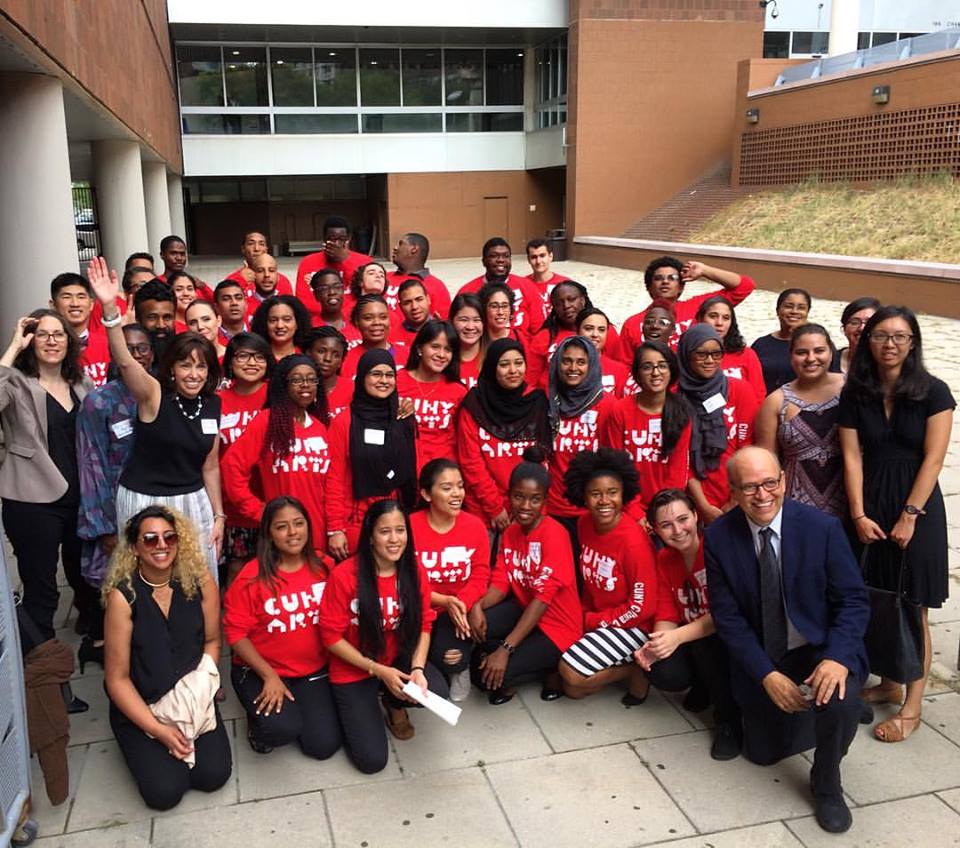
Recent studies show that museums are falling short on diversity in several key ways.

When New York City Mayor Bill de Blasio laid out his CreateNYC cultural agenda, which launched two years ago and was updated last week, he explained that it would ask cultural institutions that occupy city property to “submit a diversity plan with measurable goals for how they’re going to continue to make progress.” Then, the ways in which they demonstrated their commitment to diversity, equity, and inclusion would influence future funding decisions made by the city’s department of cultural affairs.
“It’s important to ensure, if we’re investing public money, that these organizations represent everyone and include everyone,” de Blasio said at the time.
All of the 33 arts spaces that make up the city’s Cultural Institutions Group, including the Bronx County Historical Society, the Lincoln Center for the Performing Arts, and the Metropolitan Museum of Art, met the April deadline to turn in their plans and will therefore receive their 2019 subsidies. Going forward, they will be subject to an annual review to determine eligibility, a process that raises questions about how the city plans to ensure the targets are implemented and how best to cut funding for institutions that fall short.
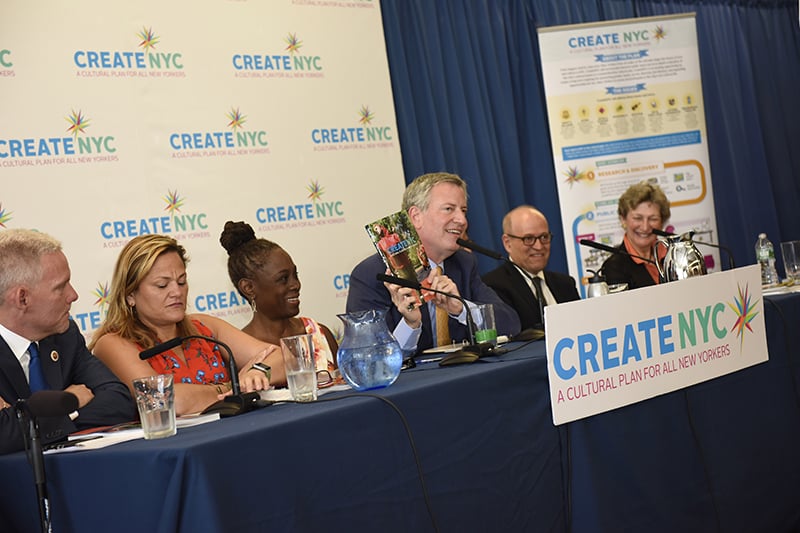
Mayor Bill de Blasio unveils the CreateNYC plan. Photo courtesy City of New York.
The mayor’s push for diversity stems from a 2016 demographic study that revealed that the staff of New York City’s cultural institutions were nearly two-thirds white, whereas the city’s population overall is only about one-third white. Higher-status jobs, like curators, were especially dominated by whites, while maintenance and security jobs were populated mostly by people of color.
Tom Finkelpearl, the city’s cultural affairs commissioner and former director of the Queens Museum, called the launch of CreateNY the “defining day” of his five years as commissioner. Today he oversees the plan and its efforts to diversify staff at cultural institutions, make them more affordable, more welcoming for immigrants, and more accessible to disabled and elderly New Yorkers.
Directions on how institutions should incorporate these objectives were left intentionally vague. Rather than issuing blanket checklists, the city wanted individual institutions to formulate plans that made sense for their respective audiences and agendas.
“The city had a pretty light touch,” says Brooklyn Museum director Anne Pasternak, who called the plan “long overdue.”
“I think they did the right thing in allowing each museum to discover for itself what their approaches should be because every institution is unique. For example, how the Jewish Museum is going to respond to what diversity and equity and inclusion looks like is very different than how the Brooklyn Museum might approach it,” she told artnet News.
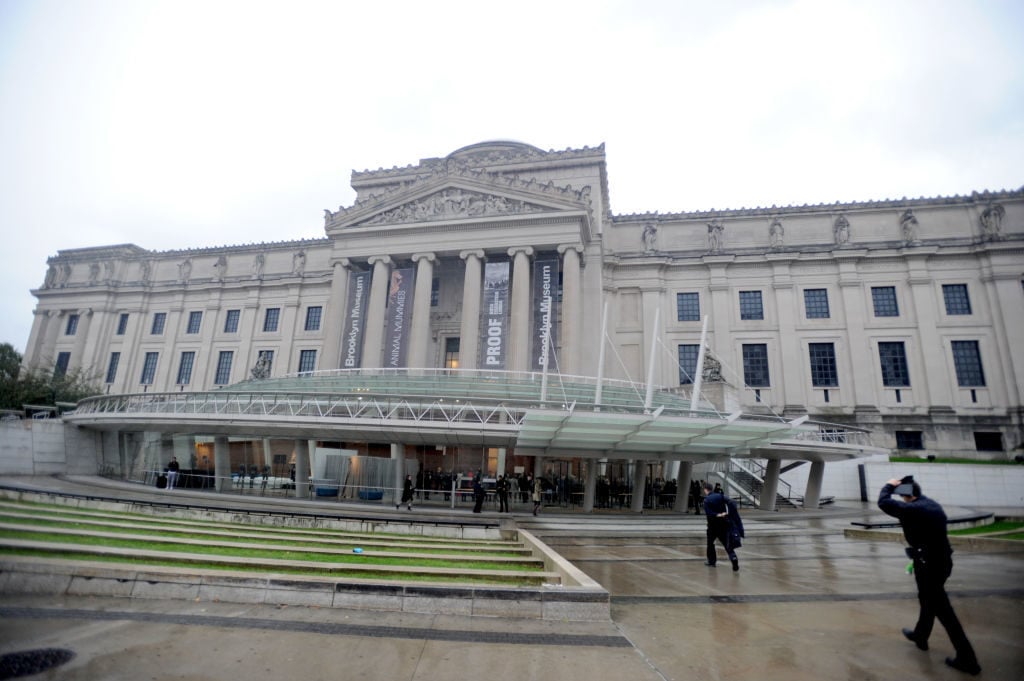
The Brooklyn Museum. Photo: Brad Barket/Getty Images.
For her museum’s part, Pasternak says she brought together volunteers, interns, staff, and board members in order to discuss how they could dismantle traditional hierarchies. “We realized in these forums that we weren’t being inclusive enough in terms of how people define themselves today compared to three or five years ago,” she says.
The museum, which receives approximately $9 million in city funds each year, has committed to full-time paid summer internships, greater wage transparency, and more equitable hiring practices. “The more diverse the staff is, in terms of disability, gender, socioeconomic status, political beliefs, and religions, the better we can do our jobs in terms of telling thoughtful stories,” Pasternak says.
It also pledged to ensure that its exhibitions allow diverse audiences to see their stories told, including through shows such as “We Wanted a Revolution: Black Radical Women, 1965-85,” “The Legacy of Lynching: Confronting Racial Terror in America,” and “Nobody Promised You Tomorrow: Art 50 Years After Stonewall.”
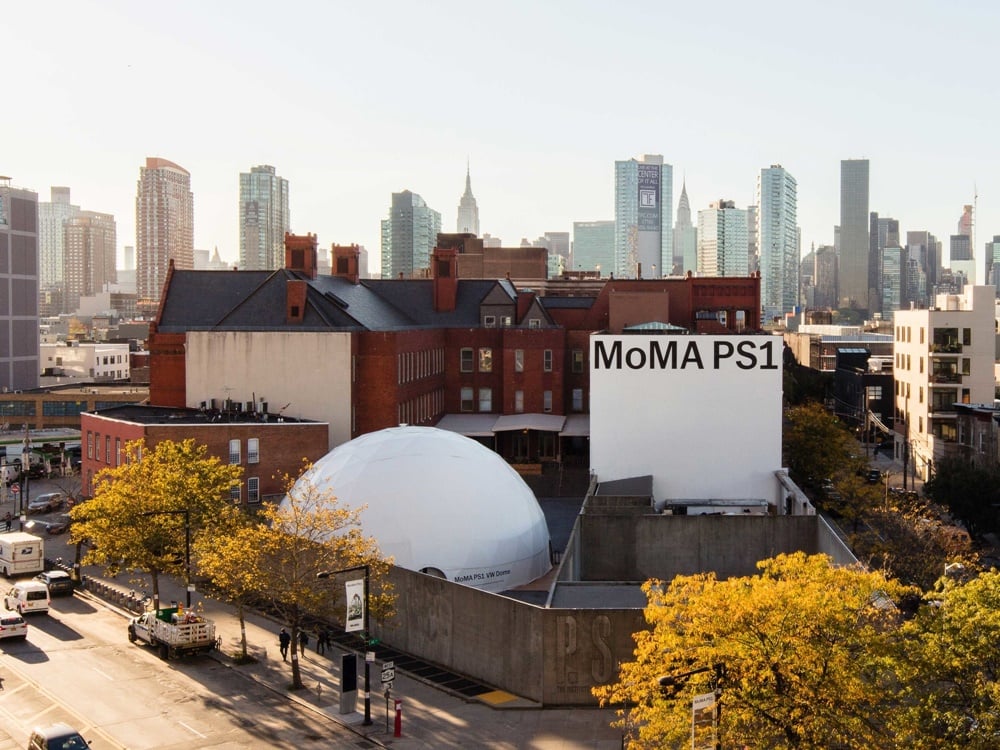
MoMA PS1. Photo courtesy of MoMA PS1.
MoMA PS1, which receives about eight percent of its operating budget from the city, has also committed to paying all of its interns in hopes of creating an employment pipeline that includes job seekers who can’t afford to work volunteer internships.
The museum also participates in the City University of New York’s Cultural Corps program, which places its students into paid positions at museums including El Museo del Barrio, the Museum of Jewish Heritage, and the Frick. MoMA PS1 also partners with LaGuardia Community College to provide part-time jobs in its visitor engagement department to students living in Queens. Similar programs with other colleges are in the works, according to the museum’s chief operating officer, Jose Ortiz.

The Brooklyn Children’s Museum. Courtesy of Wikimedia Commons.
Meanwhile, the Brooklyn Children’s Museum, which put its plan into effect on July 1, established specific goals to improve diversity among its board of trustees, staff, vendors, and audience over the next six years. The museum, which receives about half of its budget from public funding, says its staff is already quite diverse. “If you were to take our statistics at the Brooklyn Children’s Museum and line them up against all the other cultural institutions in the city of New York or in the country, we would look good,” says Stephanie Wilchfort, the museum’s chief executive. “But we have a higher obligation because we operate in central Brooklyn, in a community of color.”
For the Queens Museum, situated in the city’s most multicultural borough, “diversity is natural,” says Sally Tallant, the museum’s director. In Queens, 165 languages and dialects are spoken and nearly half of the residents are foreign born. Likewise, the staff speaks a dozen languages and the museum makes a point of offering multilingual visitor assistants and offers programs in eight languages.
Despite these achievements, the Queens Museum found during its research for the city that no one on its staff or board identifies as differently abled. The institution aims to make better use of resources like the Mayor’s Office for People with Disabilities to fill that gap. (The Queens Museum receives about half of its $6 million budget from the city.)
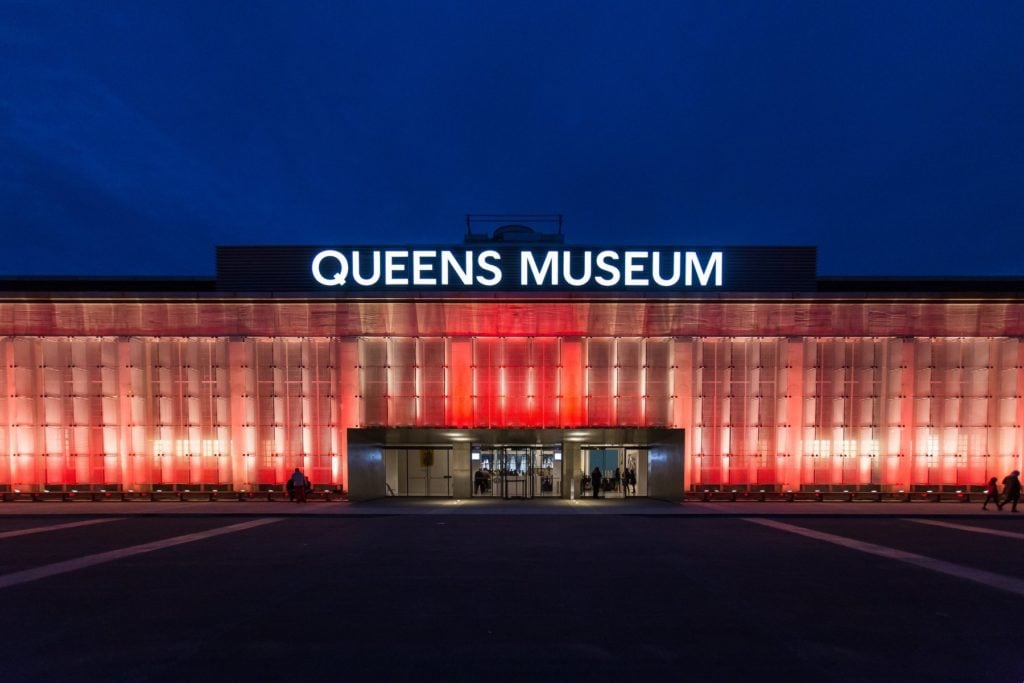
The Queens Museum. Courtesy of the Queens Museum.
Last week, the department of cultural affairs released a new study on the makeup of New York’s cultural institutions based on nearly 7,000 responses from employees or board members at 65 organizations. While it’s too soon to measure how the various institutions’ plans have taken effect, the picture remains mixed.
For one thing, the numbers on race and ethnicity have not budged since the 2016 study, with survey respondents still identifying as two-thirds white. Only about 10 percent of respondents were black and Latino (communities that represent about one-fifth and one-third of the population, respectively). Board members, curators, conservators, and editors, among other specialized roles, remain more than three-quarters white.
But the department pointed out that there have been concrete efforts made to improve some of the numbers. For example, the CUNY Cultural Corps placed 340 students in paid internships, while the CreateNYC Disability Forward Fund distributed $640,000 to 22 organizations to support programs that increased access for those with disabilities. The CreateNYC Leadership Accelerator, meanwhile, is providing professional development for mid-career cultural workers of color to prepare them for higher-ranking positions in the field.
In the area of gender, the study found that men continue to dominate at senior levels. About two-thirds of respondents were female, but half of executive leadership and board membership is male, leaving women to dominate in support and education positions, as well as in fundraising jobs. Only about .2 percent of those surveyed identified as transgender or gender non-conforming.
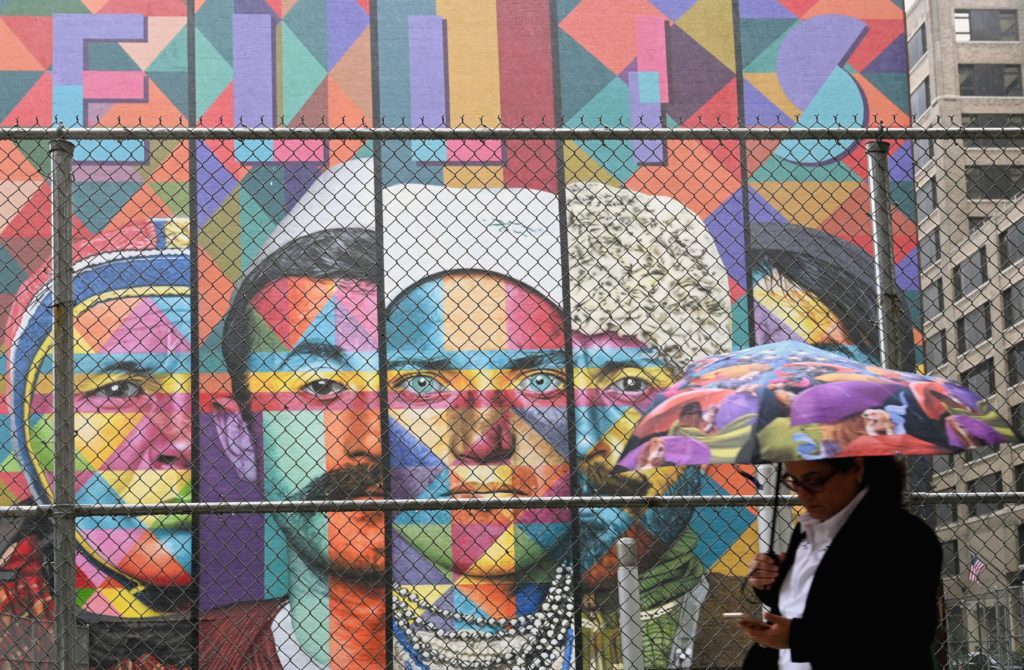
A woman with an umbrella walks past a mural named “Ellis Island” by artist Eduardo Kobra in New York City. Photo: Angela Weiss/AFP/Getty Images.
On the other hand, New York’s arts organizations, even at the highest levels, appear particularly welcoming to LGBTQ people, according to the study. Whereas a Gallup poll found that about four percent of respondents in New York are LGBTQ, about 15 percent of the arts workers surveyed identify as such. Notably, about one-quarter of the respondents in executive leadership identify as LGBTQ, though only nine percent of board members so identify.
As for disability, the research found that eight percent of culture workers indicated that they have a disability, compared to 11 percent citywide.
In 2020, the Department of Cultural Affairs plans to expand the survey to 1,000 organizations. But while these studies enable us to quantify the discrepancy between museums and the city they serve, the question of whether change will take place—and how far the mayor will go to enforce it—remains open.